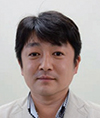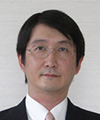 |
|||||||||||||||||||
|
|
|||||||||||||||||||
|
Feature Articles: Ultrahigh-speed Transmission Technology to Support High-capacity Communications Infrastructure of the Future Vol. 17, No. 5, pp. 20–26, May 2019. https://doi.org/10.53829/ntr201905fa3 Low-noise Amplification and Nonlinearity Mitigation Based on Parametric Repeater TechnologyAbstractDigital coherent technology has advanced greatly in recent years. Further enhancement of its potential will require a breakthrough in both electrical digital signal processing and innovative technologies that exploit the coherency of light. In this article, we describe repeater technology that uses optical parametric amplification (OPA) to minimize degradation in the signal-to-noise ratio in optical transport systems. OPA can potentially achieve low-noise amplification and mitigate nonlinear impairments. Keywords: nonlinear optics, optical parametric amplification, optical phase conjugation 1. IntroductionThe recent advances in digital coherent technology have increased the capacity of optical communications systems by improving spectral efficiency. According to Shannon’s Theory, a signal must have a high signal-to-noise ratio (SNR) if we are to achieve a system with high spectral efficiency. However, it has been pointed out that any attempt to improve the SNR is limited due to the accumulation of noise arising from optical amplifiers and signal waveform distortion (nonlinear impairments) caused by the nonlinear effect in the optical transmission fiber itself (Fig. 1(a)) [1]. New technologies designed to overcome this limit are now required if we are to improve the SNR in optical transport systems. 2. Optical parametric amplification technology based on periodically poled lithium niobate (PPLN) waveguidesWith conventional optical amplifiers such as the widely used erbium-doped fiber amplifier (EDFA), the noise figure cannot be reduced below the 3-dB quantum limit, which means that a multi-repeater transmission accumulates excess noise (Fig. 1(b)). Phase sensitive amplification (PSA), which has a phase-dependent amplification property, provides an ideal noise figure of 0 dB [2]. In other words, it makes optical amplification without SNR degradation possible (Fig. 1(b)). Current digital coherent systems achieve long-haul transmission by using electrical digital signal processing in the transmitter/receiver to compensate for various types of signal waveform distortion that are present after signals are transmitted through optical fiber. In the future, as transmission capacity is further increased, signal waveform distortion in optical fiber (nonlinear impairment) will become apparent and will limit the extension of the transmission distance (Fig. 1(c)). Optical phase conjugation (OPC)*1 has the potential to mitigate the waveform distortion that occurs during optical fiber transmission by generating a time reversal wave. This technique can be likened to playing a movie backwards. If OPC is performed at a point in the middle of the optical fiber transmission path, the signal distortion that occurred in the first half of the transmission path can be compensated for in the second half. This makes it possible to improve the SNR by increasing the power of the optical signals. It also offers the possibility of simultaneously processing wavelength division multiplexed channels with a single optical phase conjugator. This is expected to greatly reduce both the amount of digital signal processing needed for distortion compensation and the electrical power consumption. The PSA/OPC is achieved by optical parametric amplification (OPA), which transfers the energy of an intense pump to the signal (Fig. 1(d)). PSA/OPC can be implemented by inputting the signal and the pump, which is approximately twice the frequency of the signal light, into a nonlinear optical medium while appropriately adjusting the wavelength assignments and the phase relation of the signal light and pump light.
Our research group has developed PPLN*2 as a nonlinear optical medium. We have developed a ridge-shaped waveguide structure that is highly resistant to photorefractive damage [3], and high-precision waveguide fabrication technology [4], which enables us to both utilize a high-power pump and achieve high conversion efficiency. We have also developed a fiber-pigtailed module that integrates a PPLN waveguide and couplers that split/multiplex pump light and signal light that have widely different wavelengths and thus achieve fiber input and output easily and stably (Fig. 1(d)). The module has four input/output fibers suitable for the respective wavelengths of the signal and pump light beams, and dielectric multilayer mirrors for multiplexing or splitting the signal and pump light beams. This structure achieves both high stability and low-loss optical coupling between the optical fiber and a PPLN waveguide.
3. Increased gain and expanded applicability of phase sensitive amplifierIn the OPA process, energy is transferred from a pump with a frequency of 2ω to a signal with a frequency of ω1 and an idler with a frequency of ω2. If ω1 = ω2, the process is called degenerate OPA, and a PSA can be obtained with gain for the in-phase component and attenuation for the quadrature phase component with reference to the pump phase (Fig. 2(a)). At the start of this research, the gain of a PPLN module was around 6 dB (quadruple). Now, having improved the efficiency of the PPLN waveguide and greatly reduced the coupling loss of the module, we can achieve a gain exceeding 25 dB (a 320-fold increase) (Fig. 2(b)), which can sufficiently compensate for the loss in the fiber transmission span. It is also extremely important to ensure compatibility with the wavelength division multiplexing (WDM) and digital coherent technology used in existing optical communications systems. We have not only improved the performance of PPLN devices but also expanded the applicability of PSA because the abovementioned degenerate OPA was only able to handle a binary modulation signal and a single wavelength. In addition, it could only amplify a single polarized wave since a second-order nonlinear optical medium such as PPLN is usually polarization dependent (Fig. 2(a)). We have achieved the amplification of a quadrature amplitude modulation (QAM) signal and the simultaneous amplification of WDM signals (Fig. 2(c)) using nondegenerate OPA (ω1 ≠ ω2) in a parametric process. We have also achieved PSA of a polarization division multiplexing (PDM) signal by using a polarization diversity configuration. In this configuration, the input signal is split with a polarization beam splitter (PBS), independently amplified with two OPA devices, and recombined using a PBS. An experimental result for PSA of PDM- and WDM-16QAM signals using both nondegenerate parametric amplification and the polarization diversity configuration is shown in Fig. 2(d) [5]. We placed 16 carrier waves at intervals of 100 GHz at the transmitter and generated 20-Gbaud PDM-16QAM signals with pairs of phase-conjugated light beams. An 80-km dispersion-compensated fiber was used as the transmission line. At the receiver, one of the WDM signals was extracted using an optical filter, received by a digital coherent receiver, and demodulated using off-line signal processing. As shown in the input and output optical spectra in Fig. 2(d), all 16 WDM signals were simultaneously amplified with a gain of over 20 dB.
This figure shows the output spectrum of an EDFA with the same gain for comparison with the PSA. This comparison indicates that the optical SNR (OSNR) of the PSA was about 5 dB higher than that of the EDFA. The constellations of the PSA and the EDFA that were received and demodulated by a coherent receiver are also shown in Fig. 2(d). Distinct symbol separation with the demodulated signal for the PSA was clearly obtained as a result of low-noise amplification with a difference in signal quality (Q factor) of about 1 dB, which corresponded to the difference in OSNR. 4. Proposal for complementary spectral inversion OPC and mitigation of nonlinear impairmentsDigital signal processing can compensate not only for linear signal distortion but also for a nonlinear signal. However, further enhancement of the compensation performance requires an increase in the size of the signal processing circuit, which results in an increase in power consumption. OPC has long been studied with the aim of compensating for signal distortion in the optical domain without electrical signal processing. It was difficult to implement this approach with a high-capacity optical transmission system because conventional OPC occupies twice the bandwidth due to wavelength conversion, thereby reducing the spectral efficiency to less than half. To overcome this problem, we have developed a new optical signal processing circuit that spatially separates WDM signals into long-wavelength and short-wavelength signal channel groups and then applies OPC to each group using high-efficiency PPLN waveguide devices (Fig. 3(a)). Thus, we have achieved complementary spectrally inverted OPC that simultaneously compensates for the signal distortions of WDM signals without sacrificing the spectral efficiency. An experimental result for the simultaneous phase conjugation of WDM signals is shown in Fig. 3(b). We used 22.5-GBaud polarization multiplexed 16QAM signals with 92 WDM channels with a 25-GHz spacing. The optical spectrum at the transmitter and that after transmission over 3840 km (12 times recirculating loop transmission through a 320-km line) are also shown in Fig. 3(b). A comparison of the optical spectra indicates that the original signal bandwidth was retained, although the short- and long-wavelength bands, each with 46 channels, were exchanged 12 times. In addition, guard-band-less conversion was achieved except for one channel in the middle between the short- and long-wavelength bands, which is the pump bandwidth. We then achieved the highest-level transmission experiment yet reported in terms of both capacity (13.6 Tbit/s) and spectral efficiency (5.84 bit/s/Hz) using OPC [6]. We also conducted a transmission experiment using 96-Gbaud polarization multiplexed 8QAM signals in order to verify the applicability of this system to signals of 400 Gbit/s per channel. The transmission distances with and without OPC for respective optimal input powers of +6 dBm and +2 dBm are compared in Fig. 3(c). This means that the use of phase conjugation enables a higher power optical signal to be input into a transmission fiber. Thus, it was demonstrated that the maximum transmission distance (when the forward error correction threshold value Q = 5 dB) can be extended from 7040 km to 9600 km. This was the first demonstration showing that the use of phase conjugation to compensate for signal distortion can be applied to an ultrahigh-speed baud signal at a level of 400 Gbit/s [7].
5. Future prospectsThis article introduced the research and development (R&D) of OPA for optical communications with a view to improving the SNR in optical transport systems. This technology provides low-noise amplification and compensation for optical signal distortion and is also expected to lead to the generation/amplification of coherent light with various wavelengths using wavelength conversion techniques, and to quantum information processing such as squeezed light and photon pair generation. By further exploring this technology, we aim to create innovative technology that fully exploits optical coherence. Part of this research uses the results of “R&D on Optical Signal Transmission and Amplification with Frequency/Phase Precisely Controlled Carrier” commissioned by the National Institute of Information and Communications Technology of Japan. References
|
|||||||||||||||||||









